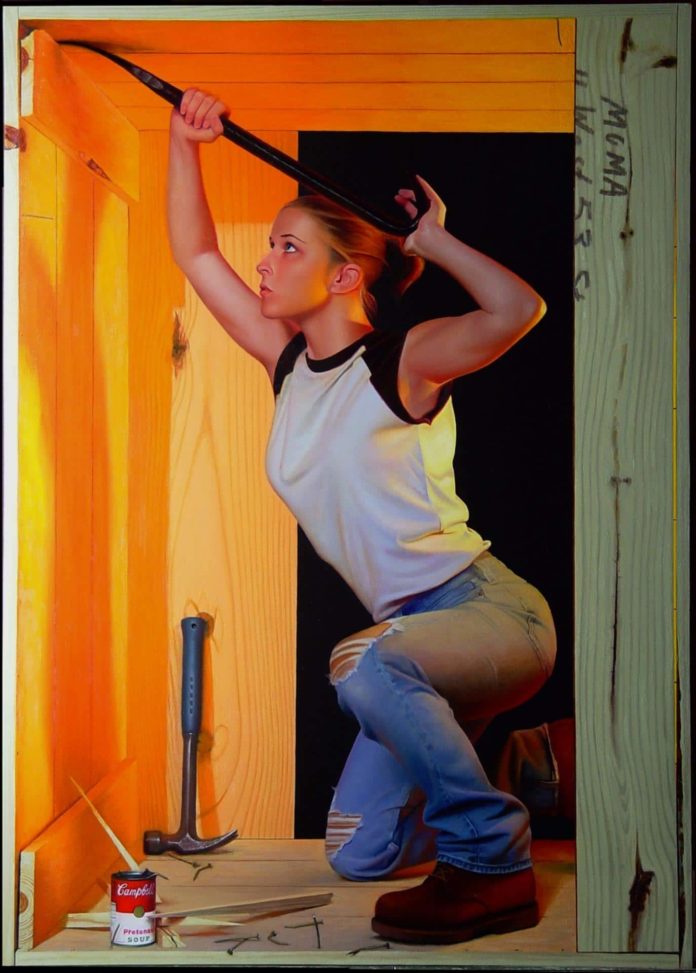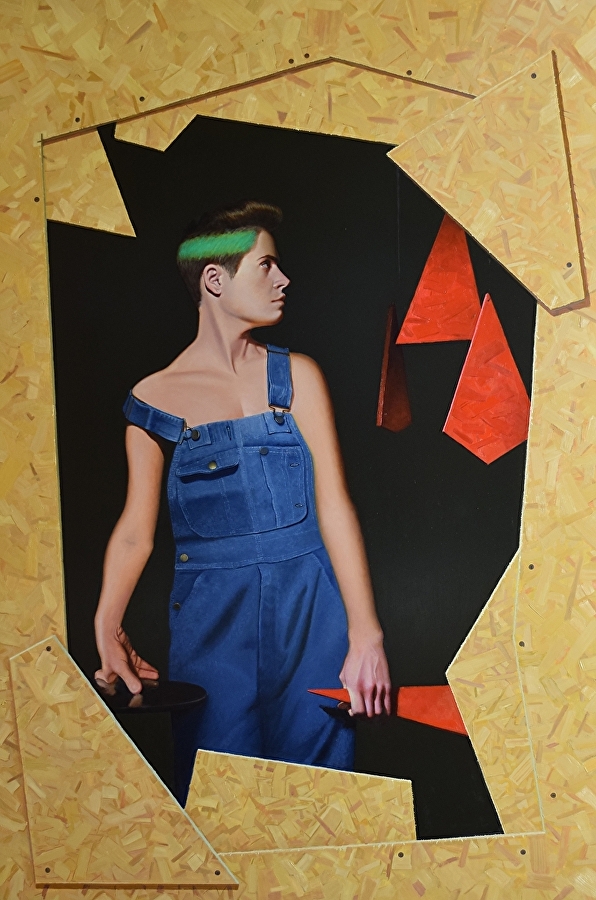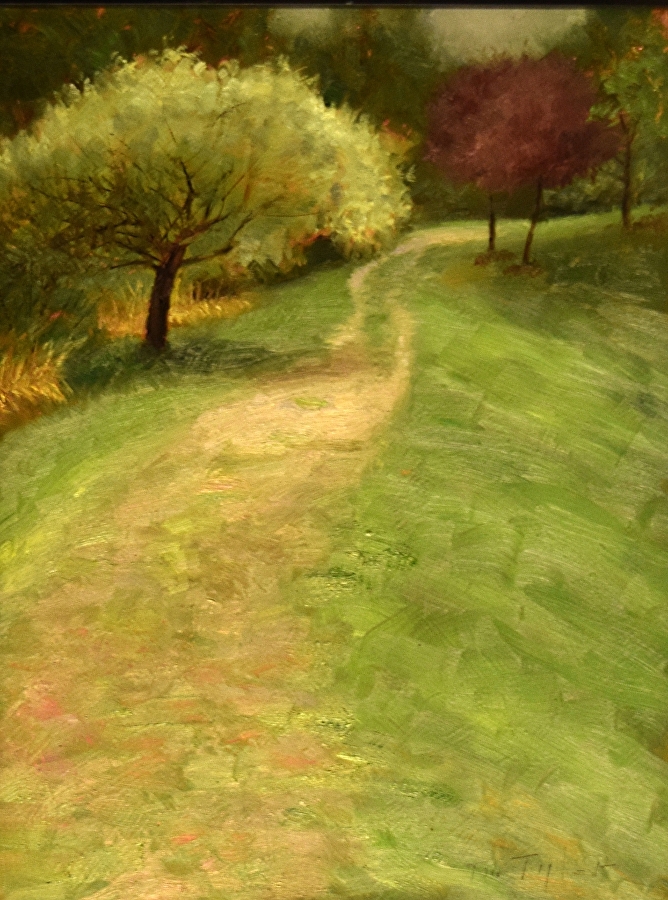
Representational Art > Contemporary figurative artist Tim Tyler takes us behind the scenes of his award-winning oil painting “The Deconstructionist,” which was a winner in the October/November 2018 PleinAir Salon, in the Best Figure category. (Enter your work here today for a chance to win cash and publication!)
Cherie Dawn Haas: Let’s start with your painting “The Deconstructionist” (above). Please tell us about the title. What was your inspiration for this painting?
Tim Tyler: I loathe pretentious, make-believe art of sharks in formaldehyde and bananas duct-taped to a wall. The not insubstantial powers that promote “modern, non-representational art” are fast to coin terms and bring to bear untold energies towards the creation, dissemination, and defense of these concepts.
I think the realism camp representing a four-thousand-year-old lineage can and should be more vocal in calling “bullshit.” The king is naked; let’s stop playing make-believe. My title is a direct response to that hackneyed term “deconstructionism.” I care about titles. Sometimes, as in this case, the title drives the creation of the entire painting.
CDH: How did you develop the composition?
TT: I wanted to employ several tools available to us who make representational art into this refutation. I’ve always enjoyed painting the unlimited effects of light. I designed this piece to use depth, temperature contrast, asymmetry, figurative impact, irony, verisimilitude, and light, to note a few devices. Things that are intrinsically white are great fun to use to powerfully define light, reflected light, and source temperature.
CDH: Please tell us about your color palette.
TT: My palette varies greatly from one piece to the next. I use any and every color I can lay my hands on “for effect.” “The Deconstructionist” comprises at least thirty different colors. For example, five yellows were used: lemon yellow, cadmium yellow light, medium, and deep, and yellow ochre.
Related article > Colorful Portraits with Just Four Tubes of Paint
CDH: What was the biggest challenge while creating this?
TT: There were two that presented themselves mid-creation. Turning blue jeans into orange near the light required some effort. The second was reconciling the cool ambient light in combination with the internal warm illumination. The edge between the wood face of the crate and the light pouring out from inside was tricky.
CDH: What brushes and surface did you use, and is there a specific reason you chose these?
TT: Great question, no one has asked that. I wanted a super-flat, rigid panel with some depth. The piece is about 5 inches deep. I took a 5 x 5–foot piece of genuine Baltic birch and cut to the size I needed. I then carefully removed some sections to reduce weight and had a strong, unified base. I then glued this to my edge boards, formed separately. Then I glued an oversized piece of hardwood onto the frame. This was trimmed and sanded for hours. High-quality gesso then went onto all surfaces, five layers. These were sanded back to a super smooth flat surface, needed for the trompe l’oeil effect I had planned.

CDH: What has been your artistic path leading up to this point?
TT: I began with landscapes and worked with still lifes for years, painting from life. Figures demand things of painters. The lessons learned on these other subjects are employed in the complex people pictures.

CDH: What’s your advice for other artists who are considering entering their work in the PleinAir Salon?
TT: Send the pieces you really believe in, because those traits you are pleased with may resonate with the judges.



Learn more about the representational art of Tim Tyler at https://tctyler.com.
Enter your best work in the current PleinAir Salon at https://pleinairsalon.com.





